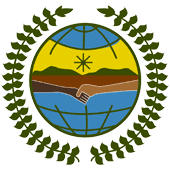 UsMob, Australia’s first Aborignal children’s interactive website, was created to allow users to interact with a virtual experience life in Hidden Valley camp outside of Alice Springs. This site was created with the vision of using new media to develop cross-cultural lines of communication, creating a non-fictional story of life in this area. The producer’s goal was to for children to learn about the community and consequence as opposed to assuming the Aboriginal children in Australia were obliged to catch up to the digital divide standards that have been determined by other communities.
UsMob, Australia’s first Aborignal children’s interactive website, was created to allow users to interact with a virtual experience life in Hidden Valley camp outside of Alice Springs. This site was created with the vision of using new media to develop cross-cultural lines of communication, creating a non-fictional story of life in this area. The producer’s goal was to for children to learn about the community and consequence as opposed to assuming the Aboriginal children in Australia were obliged to catch up to the digital divide standards that have been determined by other communities.
Set in the central desert of Australia. Visitors interact with Aboriginal teenagers adventures and crisis. This site encourages an exchange of culture, creativity, and experience between non-indigenous and Indigenous youth. Its hope is to inspire young Indigenous people to use the Internet to develop skills. This online environment was developed with a sensitivity to authoring biases ensuring that it is relevant to Indigenous audiences.
The interactive website takes visitors on a seven part journey which includes:
Episode 1: Kwatye (Water)
Aboriginal kids don’t get lost in the desert without any water… do they?
Fact Sheet: Finding Water in Desert
Fact Sheet: Different Foods in Arrernte Country
Episode 2: Money Day
Teased about her hearing aid at school, Della has to decide whose voice she will listen to.
Fact Sheet: Indigenous Languages in Australia
Fact Sheet: Deafness in Indigenous Communities
Episode 3: Ure (Fire)
When Harry burns a tree on someone else’s land, is it just nature that he is messing with?
Fact Sheet: Traditional Healing
Fact Sheet: Lhere Mparntwe
Episode 4: Wrong Skin
In a battle for the same boy, sisters Jacquita and Della must decide whether to follow their hearts or their traditional law.
Fact Sheet: Skin Names
Episode 5: Pmere Amekemeke (Sacred Sites)
10, 9, 8, 7… As their childhood days disappear and the non-Aboriginal world seems to be closing in, will Charlie and Harry’s friendship survive?
Fact Sheet: Traditional Stories
Fact Sheet: Sacred Sites
Episode 6: Sniffer
Alienated by her family and friends, Della turns to petrol sniffing and leaves her sister with a difficult decision.
Fact Sheet: Petrol Sniffing
Fact Sheet: Arrernte Culture I
Episode 7: Iwerre Atherrame (Two Paths)
No longer a boy but still not a man. Can Harry keep pushing both black and white laws and avoid the consequences?
Fact Sheet: Arrernte Culture II
UsMob logo [Online Image]. (n.d.). Retrieved November 17, 2009, from UsMob website. http://www.usmob.com.au/index.html














 The
The